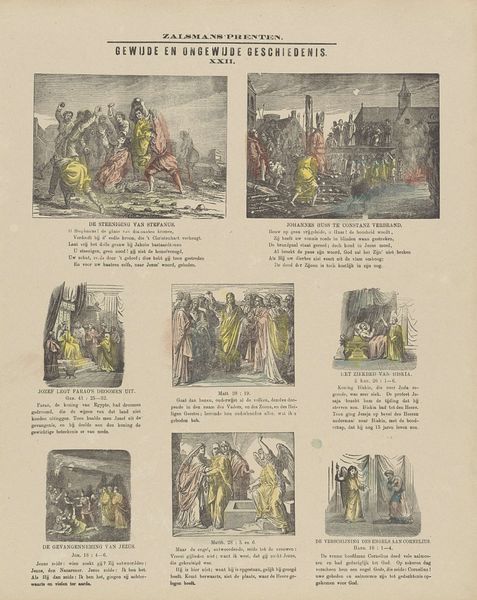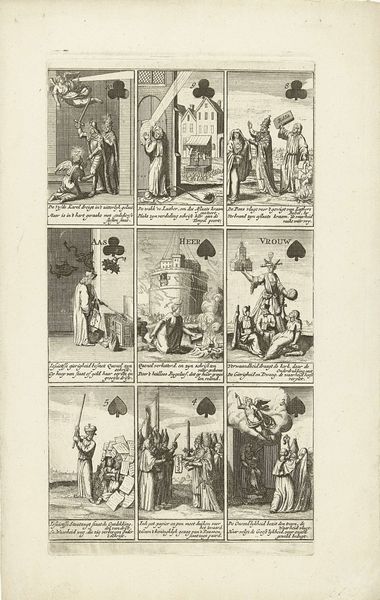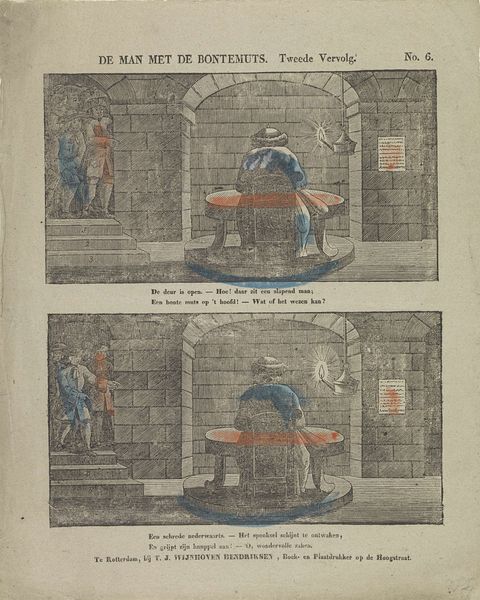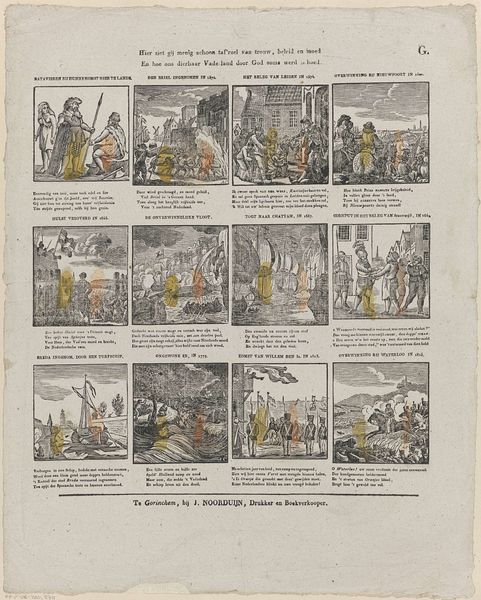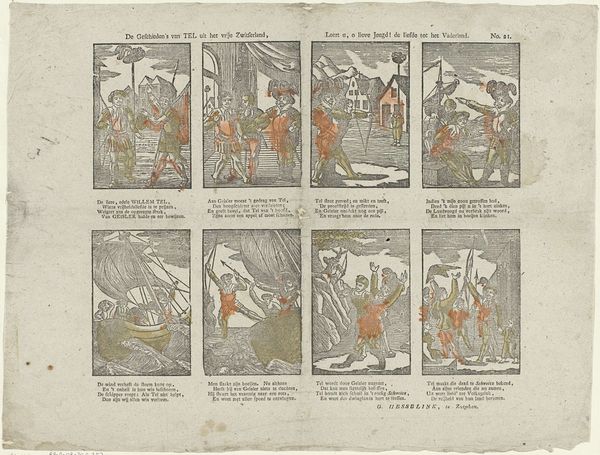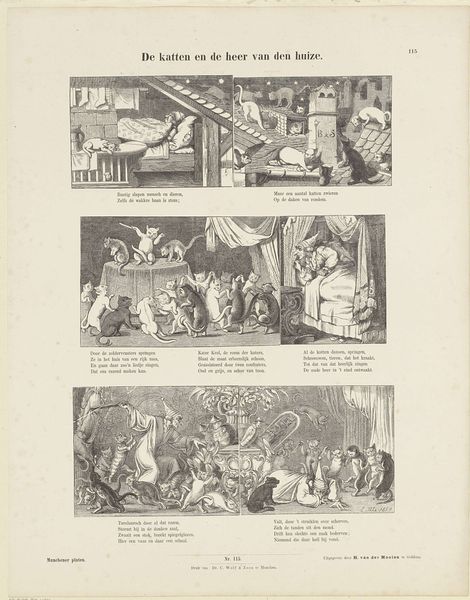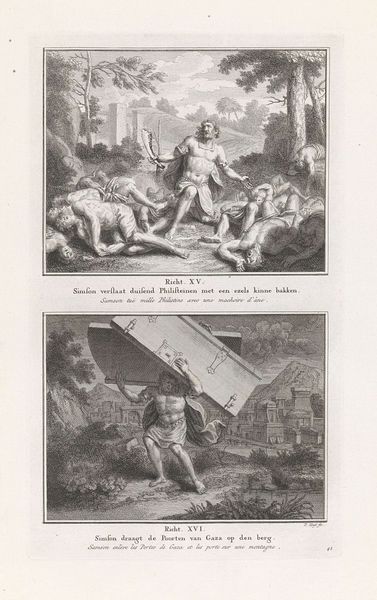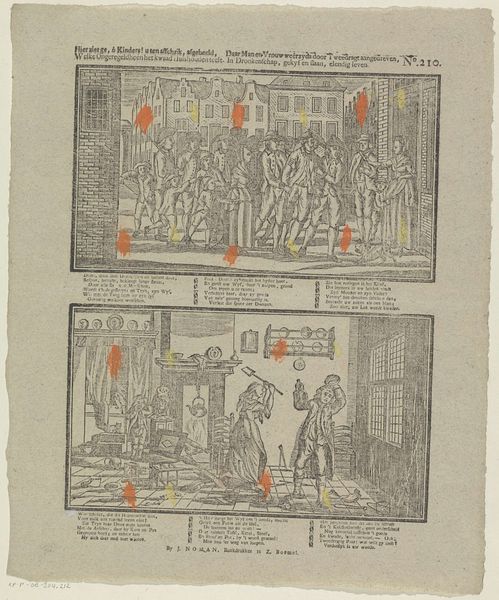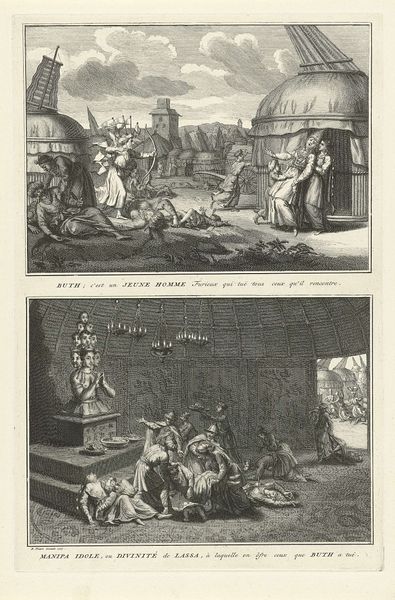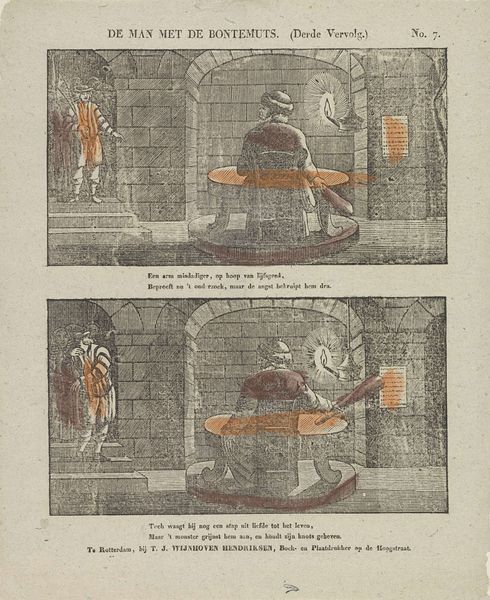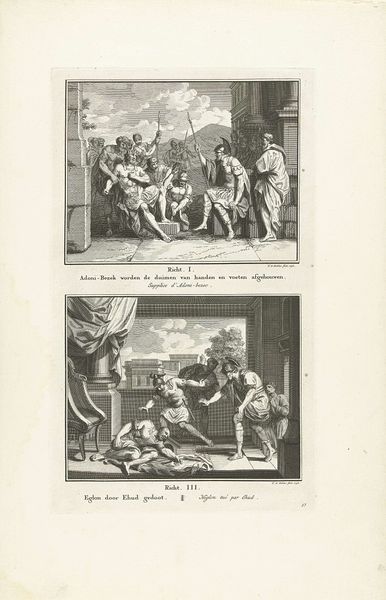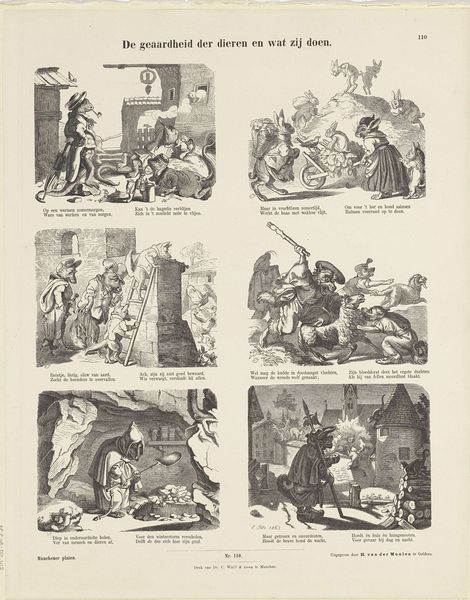
print, engraving
# print
#
19th century
#
genre-painting
#
history-painting
#
engraving
#
watercolor
Dimensions: height 395 mm, width 327 mm
Copyright: Rijks Museum: Open Domain
Hermanus Numan created this print, "De man met de bontemuts", sometime in the late 18th century, a period rife with social and political upheaval. Here, the dominant symbol is the 'bontemuts' – a fur cap – worn by the central figure, acting as a symbol of disguise and hidden identity. This motif echoes through history, resurfacing in commedia dell'arte characters and carnival traditions, where the mask and costume allow for temporary inversions of social order and explorations of the subconscious self. One can trace its evolution to the fool's cap, a marker of the outsider. Consider the act of unveiling, or unmasking, a recurring theme in art and literature, representing the stripping away of illusion to reveal underlying truths. This print shows the moment of revelation. The crowd has gathered and exposed the main character who they thought was dead. The collective hysteria and the mob mentality are powerful forces, engaging viewers on a deep, subconscious level. This scene reminds us of how fear and superstition can drive human actions. The image's power lies in its depiction of a non-linear, cyclical progression, where symbols resurface, evolve, and take on new meanings across time.
Comments
No comments
Be the first to comment and join the conversation on the ultimate creative platform.

